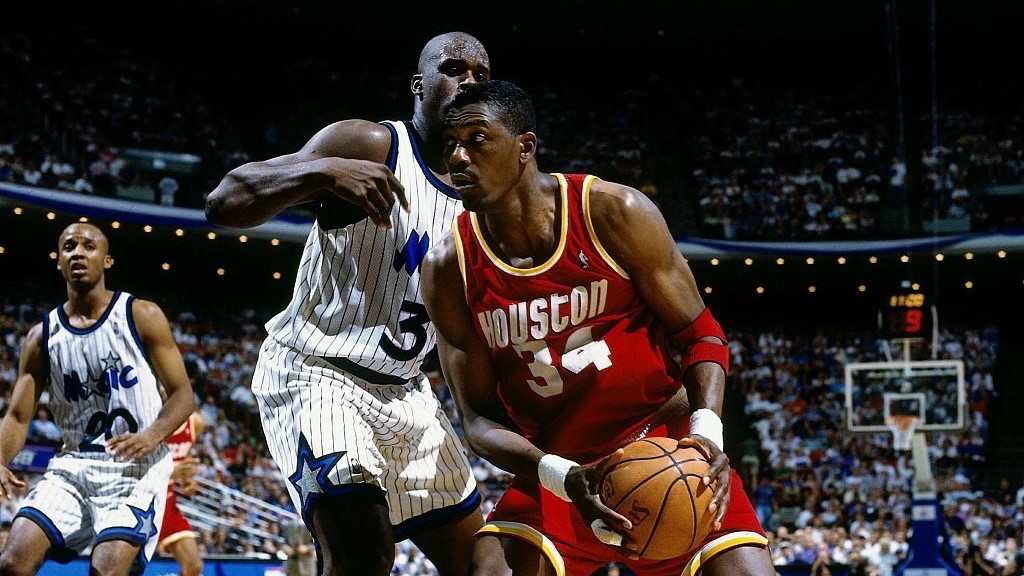
Hakeem Olajuwon #34 of the Houston Rockets tries to penetrate in Game 2 of the NBA Finals at the Orlando Arena in Orlando, Florida, June 9, 1995. /VCG
Hakeem Olajuwon #34 of the Houston Rockets tries to penetrate in Game 2 of the NBA Finals at the Orlando Arena in Orlando, Florida, June 9, 1995. /VCG
The 1990s in the NBA belonged to Michael Jordan who led the Chicago Bulls to win six championships but it was also the best era for big men who dominated the paint with their size, power and skill. Four of the giants during that period of time in the end revealed themselves as the Top 4 centers, perhaps ever: Hakeem Olajuwon, Shaquille O'Neal, David Robinson and Patrick Ewing.
Naismith Basketball Hall of Famer Alonzo Mourning entered the league in 1992 and dropped 21.0 points, 10.3 rebounds, 3.5 blocks at a field goal rate of 51.1 plus a free throw rate of 78 percent in his rookie season. In fact, he continued to put down similar numbers for another five seasons but did not make any of the All-NBA Teams because the above four guys occupied all the spots.
O'Neal joined the NBA in the same year as Mourning and was able to score 23.4 points, 13.9 rebounds and 3.5 rebounds per game in his first season. He ranked seventh in the Most Valuable Player competition but failed make any of the All-NBA Teams too. The centers on the First, Second and Third Teams were Olajuwon, Ewing and Robinson respectively.
O'Neal raised his score to 29.3 points in the second year but was named only the Third-Team after Olajuwon (First Team) and Robinson (Second Team). By the way, in the 1994 MVP competition, O'Neal was No. 4, trailing Olajuwon, Robinson, Scottie Pippen, but was just ahead of Ewing.
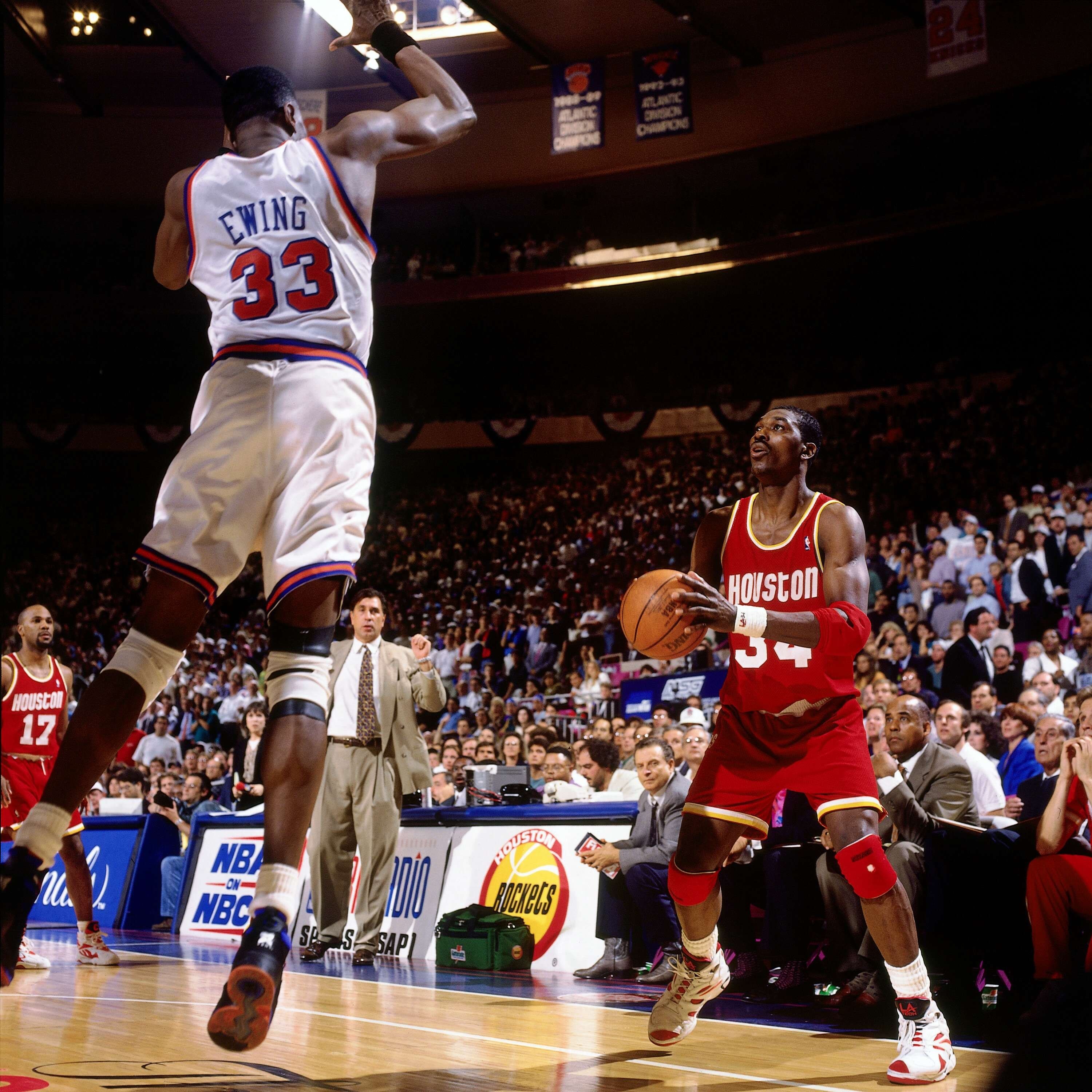
Hakeem Olajuwon #34 of the Houston Rockets faces Patrick Ewing in Game 5 of the NBA Finals against the New York Knicks at Madison Square Garden in New York City, June 17, 1994. /VCG
Hakeem Olajuwon #34 of the Houston Rockets faces Patrick Ewing in Game 5 of the NBA Finals against the New York Knicks at Madison Square Garden in New York City, June 17, 1994. /VCG
Olajuwon's signature move was his footwork, which has been known as the "Dream Shake." However, he was considered to have the best athleticism for a center in NBA history before Robinson joined the league. In his young years, Olajuwon did not do so many shakes – because he didn't have to. Having been relying on his penetration and perimeter shooting, 23-year-old Olajuwon led the Houston Rockets to the NBA Finals in 1986 and humiliated the Boston Celtics' big men – Kevin McHale, Robert Parish – by scoring 33 points and grabbing 12 rebounds in Game 1 at the Boston Garden. In the end, it was Larry Bird and his double teaming that stopped Olajuwon from continuing to create miracles.
Nonetheless, Olajuwon was not really a good teammate at least in the first eight years of his career. He had a bad temper and did not like passing very much. In 1992, he almost left the Rockets after a huge fight with the team on the plane. However, after he was knocked out by the trapping and switching everything defense of the Seattle SuperSonics in the 1993 playoffs, Olajuwon became a better team player and defeated O'Neal, Ewing and Robinson in the next two seasons to win two titles in a row. Specially in 1994, he became the only person in NBA history to pocket the regular season MVP, the Finals MVP and the Defensive Player of the Year award in one season.
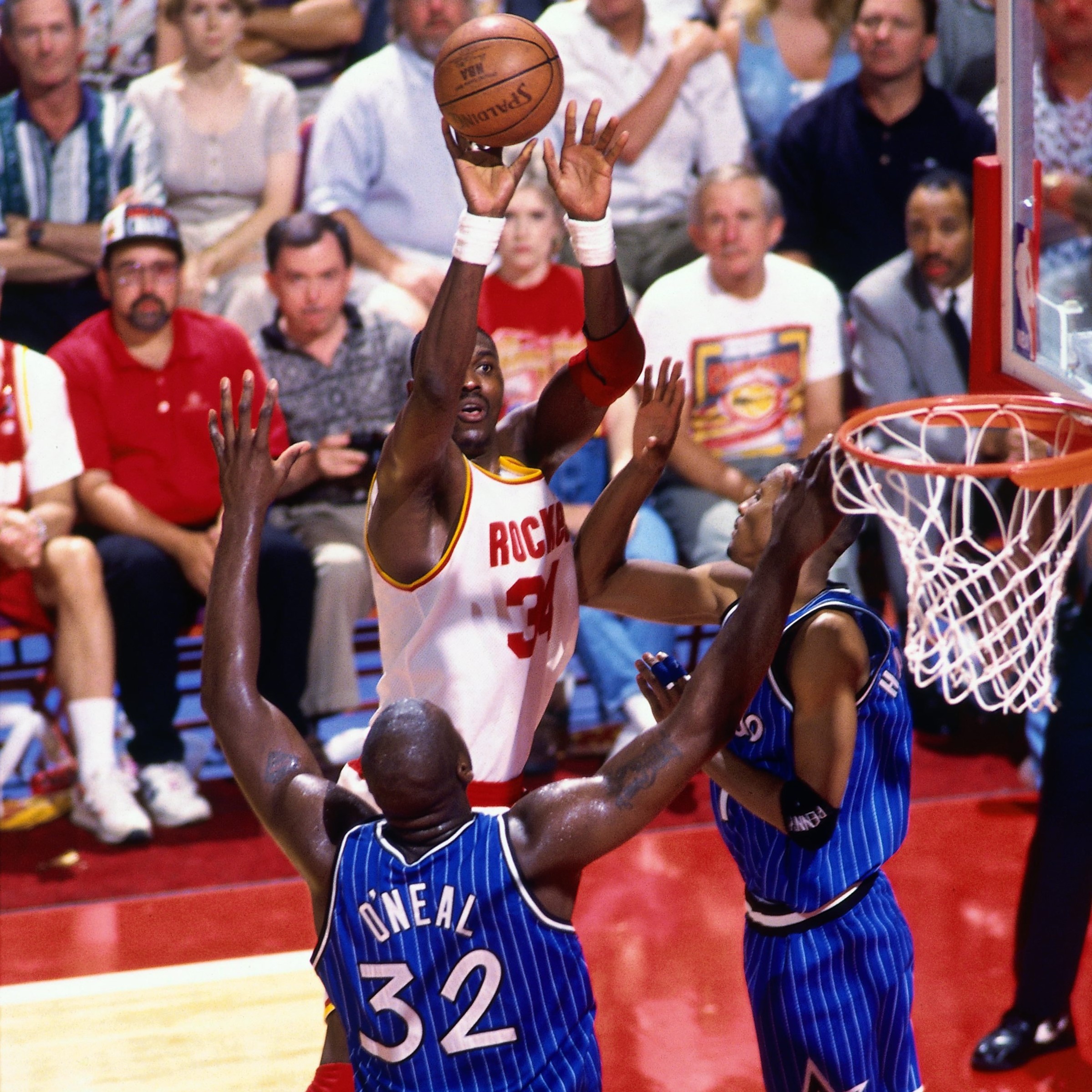
Hakeem Olajuwon #34 of the Houston Rockets shoots the ball in Game 3 of the NBA Finals against the Orlando Magic at The Summitt in Houston, Texas, June 11, 1995. /VCG
Hakeem Olajuwon #34 of the Houston Rockets shoots the ball in Game 3 of the NBA Finals against the Orlando Magic at The Summitt in Houston, Texas, June 11, 1995. /VCG
One thing many failed to notice about Olajuwon was that he ranked ninth on the list of NBA career steals leaders. Those who trailed him included three-time steals leaders Alvin Robertson and Allen Iverson, and Kevin Garnett.
Though many were willing to spend tens of thousands of U.S. dollars learning Olajuwon's footwork, his post-up skills were actually not built for big men. Olajuwon was almost unstoppable on offense because he played like a small forward. That's why of all those many people who paid him to teach them, Kobe Bryant was the most successful – only swingman with shooting threat could maximize the power of the Dream Shake.
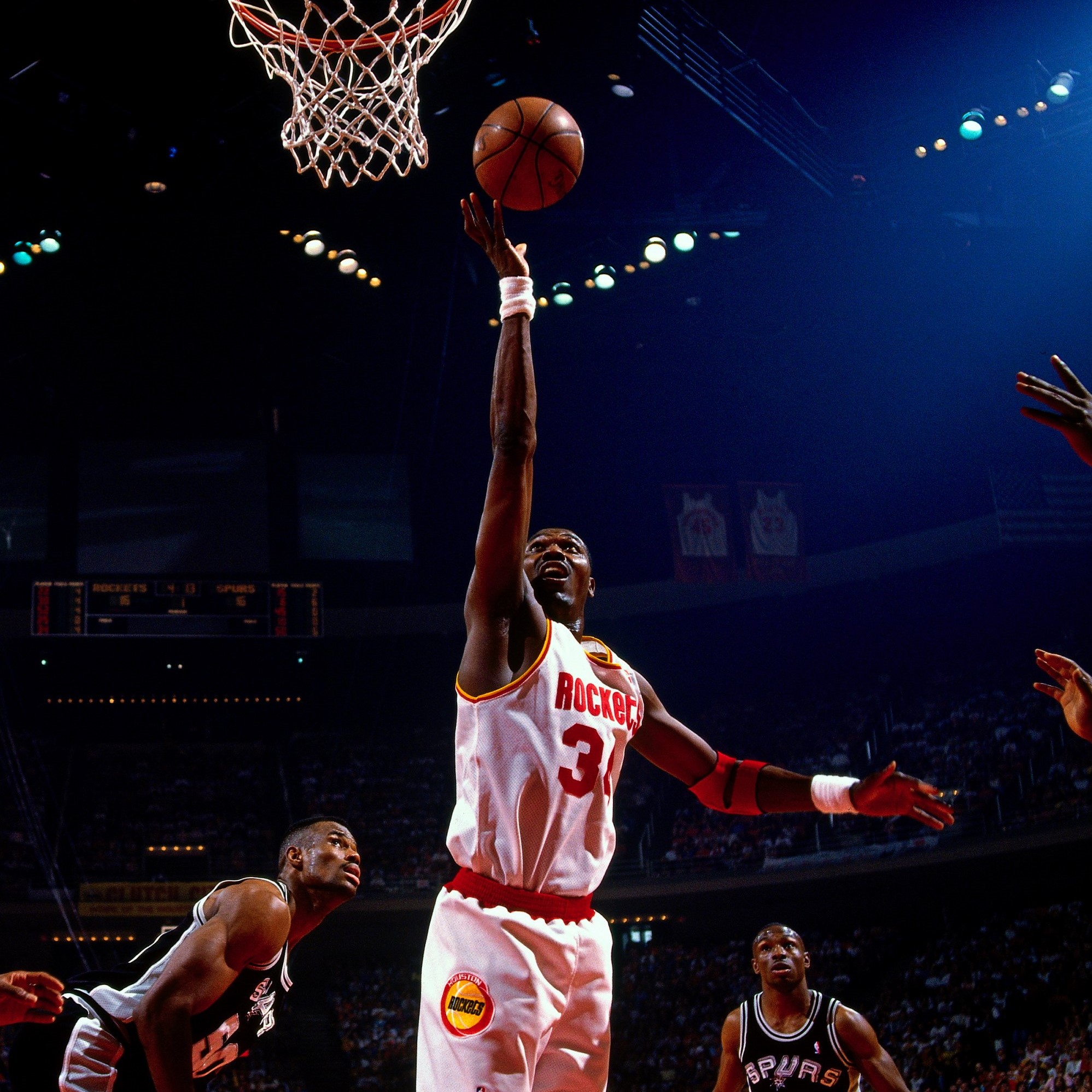
Hakeem Olajuwon #34 of the Houston Rockets shoots the ball in Game 4 of the Western COnference against the San Antonio Spur at The Summit, May 28, 1995. /VCG
Hakeem Olajuwon #34 of the Houston Rockets shoots the ball in Game 4 of the Western COnference against the San Antonio Spur at The Summit, May 28, 1995. /VCG
Imagine you are an NBA center who needed to defend Olajuwon. Your target was shorter than 2.10 meters, but he had long limbs, including 2.29-meter-wingspan. He received the ball and posted up in the left elbow.
He had solid lower body so you could not push him out. He could either turn left to do a hook shot, or go right for a baseline jumper. He was good at both so you must watch out for two directions.
When Olajuwon turned around, he preferred to expand his elbows to stick you in your waist to keep you from following him – only for a wink but that's enough for him to finish shooting.
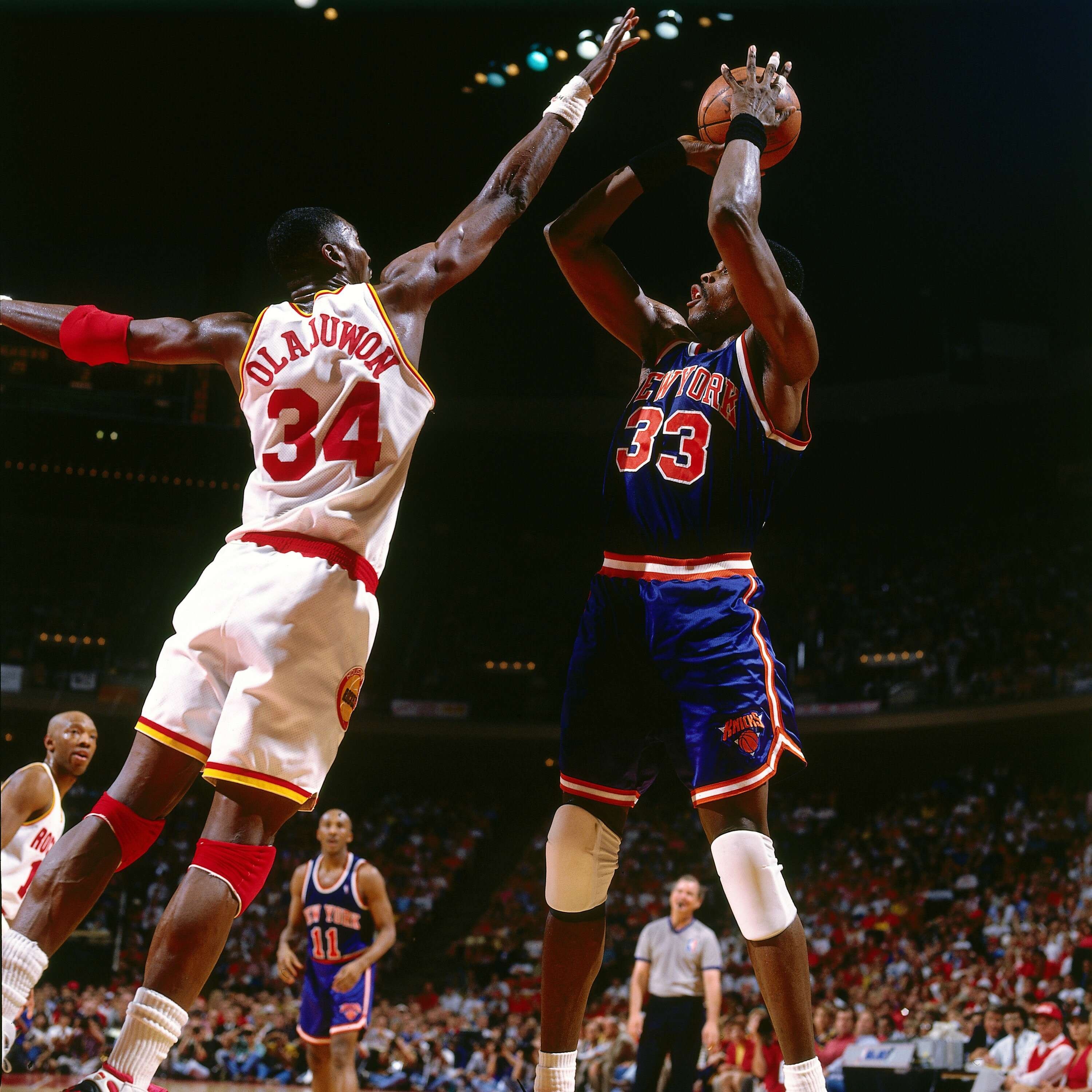
Hakeem Olajuwon #34 of the Houston Rockets tries to block a shot by Patrick Ewing in Game 7 of the NBA Finals against the New York Knicks at The Summit, June 22, 1994. /VCG
Hakeem Olajuwon #34 of the Houston Rockets tries to block a shot by Patrick Ewing in Game 7 of the NBA Finals against the New York Knicks at The Summit, June 22, 1994. /VCG
In fact, Olajuwon did not have to post up because he could destroy you while facing the rim. You must try to follow him as soon as possible in every move for two reasons. First, hes quick enough to dodge you in the first step. Second, his perimeter and hook shooting meant that every fake he tried could immediately become real.